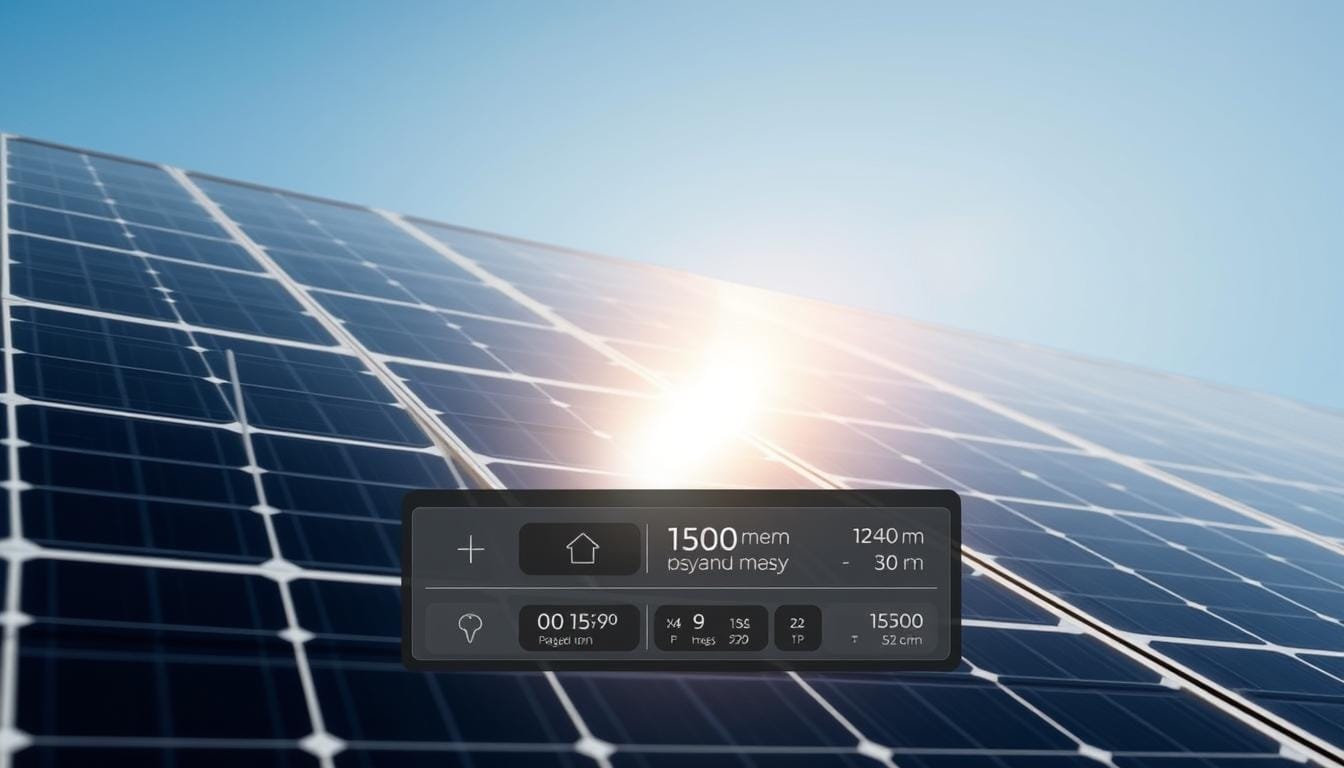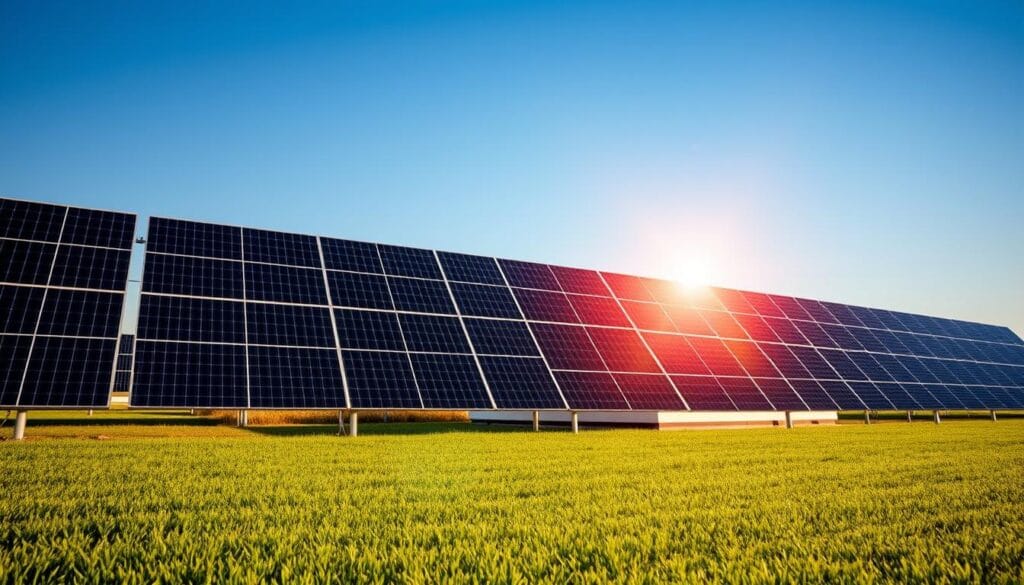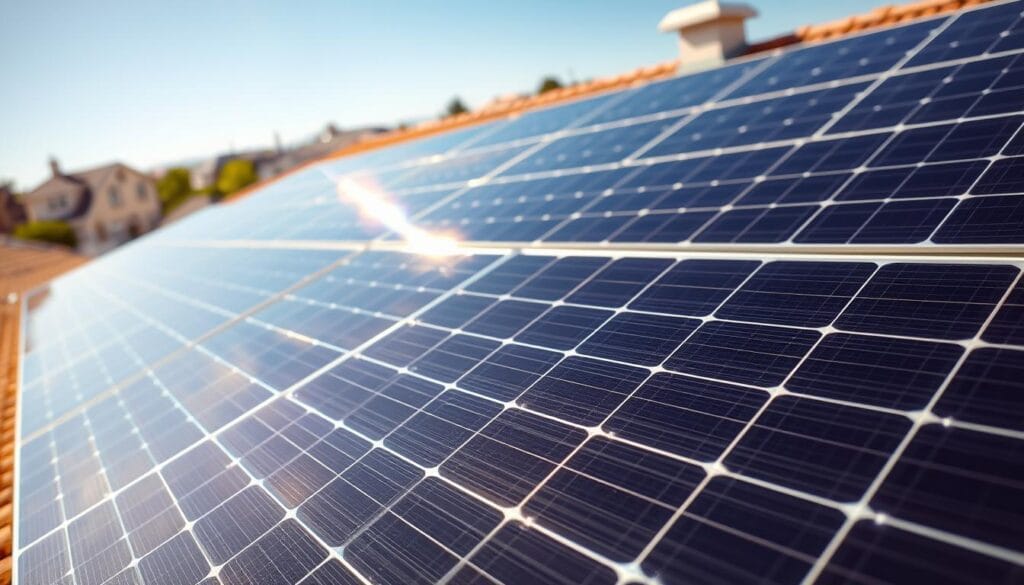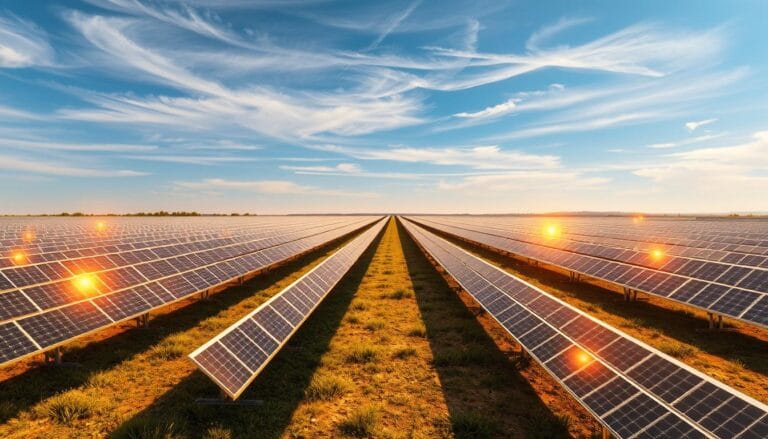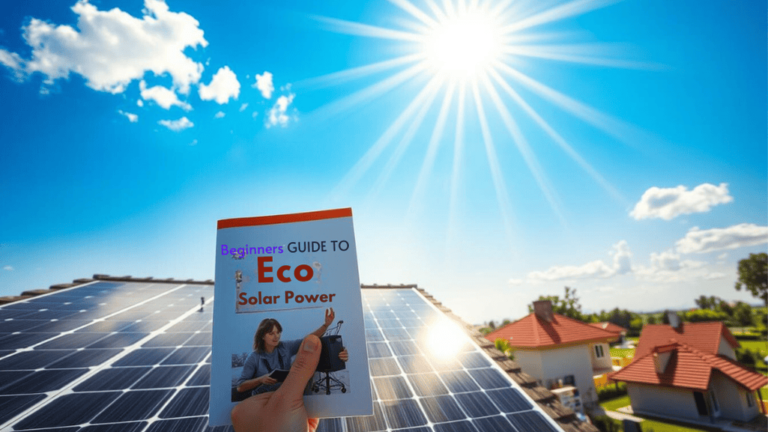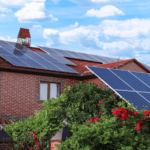Want a clear plan for home energy? This short guide helps you turn bills and sun exposure into a practical system estimate. Use a simple formula to find array output: yearly kWh ÷ (365 × average daily sun hours). That result gives a target system wattage to meet your needs.
Next, translate watts into hardware. Convert system kW to number of modules with: required panels = system kW × 1000 ÷ panel output (a common single-module output is about 300 W). Factor roof area and shading when planning layout so equipment fits and performs well.
Use tools wisely: a reliable system estimate tool can speed decisions and show tradeoffs between higher-efficiency modules and more standard units. For a practical online example, try this system estimate tool to move from curiosity to a plan you can act on.
Key Takeaways
- solar panel size calculator.
- Estimate annual array output with yearly kWh and average sun hours.
- Convert system kW to exact module count using panel watt ratings.
- Check roof area and shading before ordering equipment.
- Balance efficiency against cost to suit your budget and roof.
- Account for local weather and losses when sizing for reliability.
Why sizing your solar system matters today in the United States
Sizing matters because it links your energy goals to actual rooftop and weather limits. Picking the right output level shapes monthly bills, outage resilience, and long-term payback. Start with yearly use and local sun to build a realistic plan.
A reliable calculator turns usage, hours of sun, and losses into a clear target. The practical formula ties desired bill offset to array output using an environmental factor for humidity, pollution, and snow. Excluding shaded roof areas improves accuracy and avoids overestimates.
From lower bills to energy independence: what the right system unlocks
- Lower monthly costs: Match capacity to demand and regional rates to reduce bills.
- Stability: Proper planning shifts some power bills away from volatile markets.
- Practical installation: Consider roof shape, shade, and panel efficiency to fit your space.
How a solar calculator turns data into a clear plan
Good tools show how tweaking offset goals or the environmental factor changes your recommendation. Even a small extra allowance for winter clouds makes the plan more dependable.
How to use a solar panel size calculator to find your ideal system
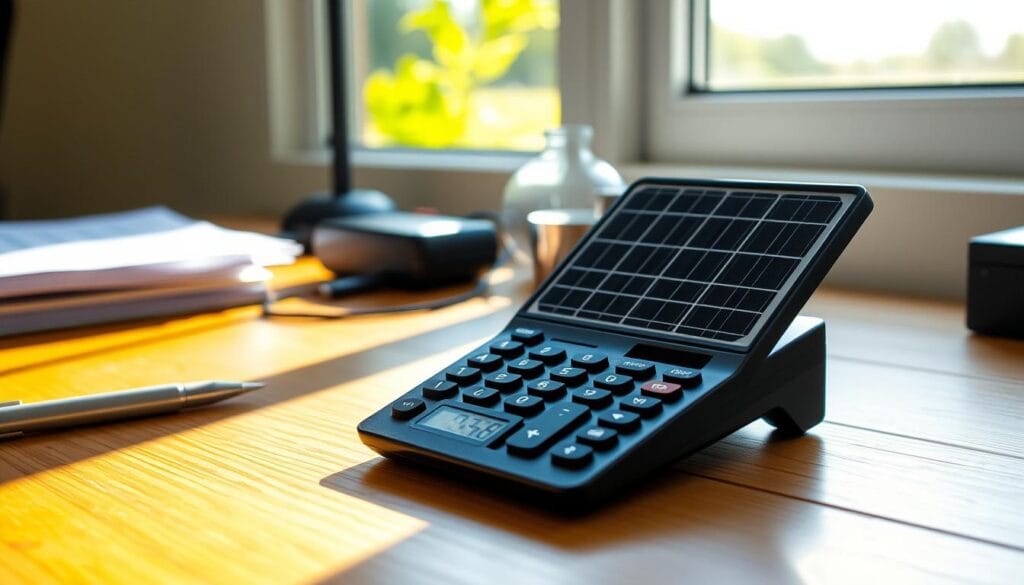
Start with twelve months of bills and local sun hours so your plan reflects real use and seasonal swings. This anchors decisions in data, not guesswork.
Convert loads carefully. Use the BatteryStuff rule: 1 Amp AC ≈ 10 Amps DC. Add ~10% for inverter losses, then compute DC watts as DC amps × system voltage (commonly 12 V). Track each device by hours per day to get daily watt‑hours and amp‑hours.
Estimate array output and adjust for reality
Apply the formula: yearly kWh ÷ (365 × average sun hours) to get baseline output. Multiply by an environmental factor for snow, dust, and pollution.
“Be conservative with sun estimates—include a worst‑weather multiplier (about 1.55) to avoid shortfalls.”
From target to hardware and batteries
Translate system kW to required panels by rounding up the number. Match series count to system voltage (e.g., 1 for 12 V, 2 for 24 V) and add parallel strings for current.
For storage: pick backup days, calculate daily amp‑hours, and size batteries so normal use stays near 50% depth of discharge to extend life.
- Final step: review inputs one more time—small changes in run time or sun hours change outcomes and costs.
Turn calculations into a roof-ready plan: panels, batteries, and real-world examples
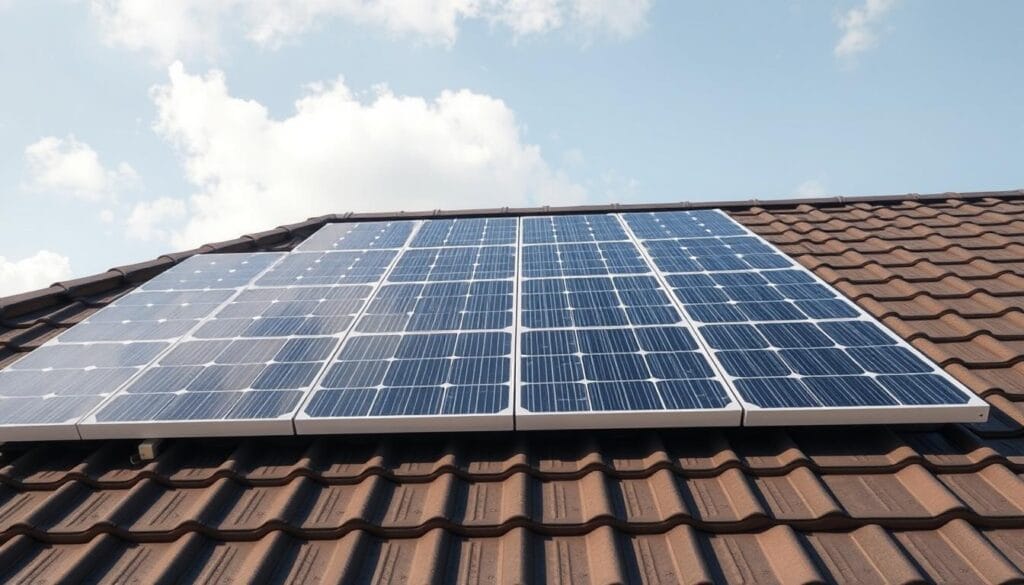
Turn your target output into a rooftop plan by measuring what your roof can actually host. Start by excluding shaded areas and obstacles, then map usable area in square feet. This makes the design practical and serviceable over the system’s life.
Check fit: dimensions, usable roof area, and shade constraints
Measure roof zones and subtract shaded or obstructed sections. Use the equation area occupied = required panels × panel width × panel length to confirm the layout fits with service access.
From kW to panels: typical 300 W modules, layout, and footprint
Convert your system size to a number by using required panels = system kW × 1000 ÷ 300. Then verify the footprint and leave room for setbacks and maintenance.
US example in practice: Boston system, costs, payback, incentives
Example: a household using 627 kWh/month at $0.1491/kWh (~$1,128/yr) with one shaded gable side leaves about 875 ft² usable. A conservative environmental factor of 70% points to ~7.36 kW to offset bills fully.
An 8 kW installation averaging $25,680 implies a simple payback near 23 years before tax credits or local incentives. Keep incentives and future price trends in mind to shorten that horizon.
Off-grid vs. grid-tied: sizing from appliance lists and daily run time
Off-grid plans start with a full appliance list and hours per day to get daily watt-hours. Match battery capacity to desired backup hours and a safe depth of discharge.
- Electrical layout: set series count to meet system voltage (for example, one module in series for 12 V, two for 24 V), then add parallel strings to reach required current.
- Final check: run one last conservative pass with your calculator and verify cable sizing, combiner boxes, and disconnects before ordering equipment.
Conclusion
Wrap up your project by matching measured use with honest sun‑hour estimates and conservative loss factors. This brief guide helps you turn bills into a practical plan that meets your home energy needs.
Confirm layout with actual module dimensions and roof constraints. Align your inverter and a solar panel selection to a battery strategy that keeps critical circuits running. Size the solar battery and batteries for about 50% depth of discharge and enough days of backup to match your resilience needs.
Next step: refine numbers, confirm fit, and get quotes. For a practical online example, try this practical calculator example to turn estimates into a roof‑ready design.


